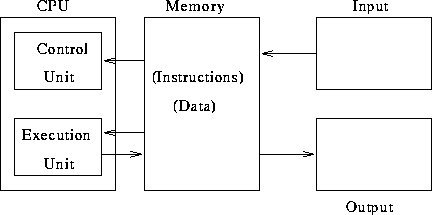
Tom Kelliher, CS 102
Jan. 19, 2001
How do I switch printers in the Lab?
How are network accounts coming along?
Read the following and be able to answer the questions.
http://www.howstuffworks.com/hard-disk.htm)
Read the entire article.
At the most basic level, where is information stored on a hard disk? What is a platter? Does a hard disk usually have more than one? What is a sector? A track?
http://www.howstuffworks.com/computer-memory.htm)
Read the first two pages.
Name two types of temporary storage. Two types of permanent storage. What is ROM? When an application is loaded or a document opened, where does it go? Why?
http://www.howstuffworks.com/question163.htm)
How does a bubble jet printer form an ink droplet? How many nozzles will it have? Can they all form droplets simultaneously?
Syllabus, survey.
Inside a computer.
Survey says... Things I hope we touch upon this semester:
Napster; ISP; technology pace, effects; MusicMatch; RAM; HTML; URL; WWW; .com; gopher; telnet; ping rate; T1, T3; modem; software vs. hardware; SMTP; POP; download; computer purchase --- essential components; web page construction; ethics; privacy, corporate e-mail snooping; AI; how Internet works; technology in primary & secondary schools; ownership, copyright; upgrading RAM; burning CDs; online purchasing safety; molecular processing, Ray Kurzweil; service economy vs. info economy; narrowing searches; Microsoft anti-trust suit; increasing reliance upon computers --- Y2K.
A block diagram:

Consider the following simple program:
1: let sum = 0 2: print "How many numbers? " 3: read count 4: let loopCount = count 5: if loopCount equals 0 goto 11 6: print "Next number: " 7: read input 8: let sum = sum + input 9: let loopCount = loopCount - 1 10: goto 5 11: let average = sum / count 12: print "The average is:", average, "." 13: end
read decimalNumber
while decimalNumber does not equal 0
{
let remainder be the remainder of decimalNumber / 2
let decimalNumber be the integer quotient of decimalNumber / 2
print remainder to the left of any other digits printed
}